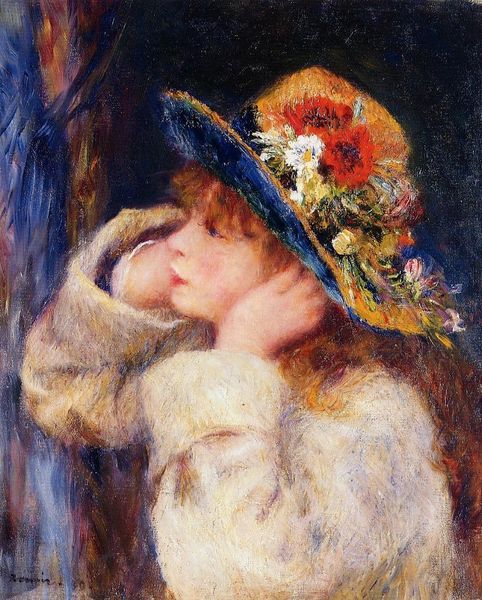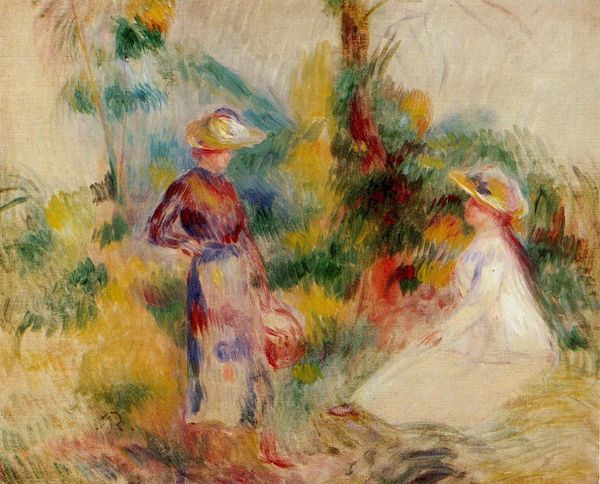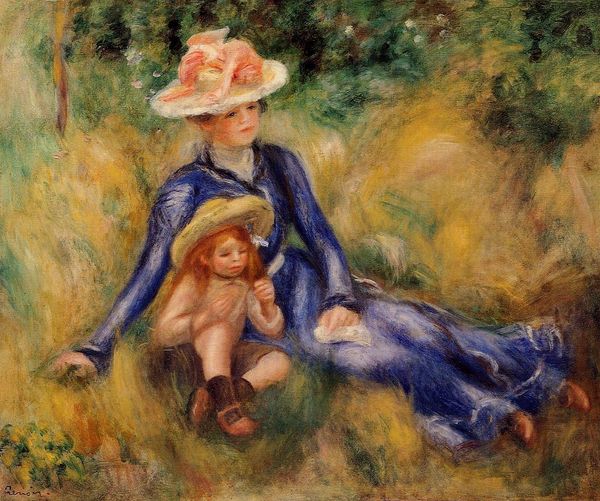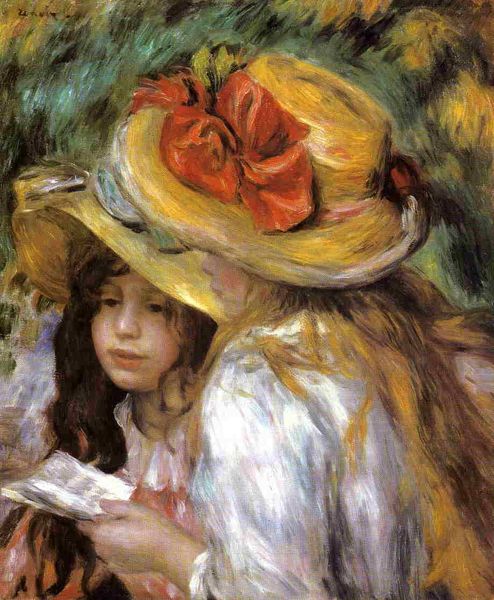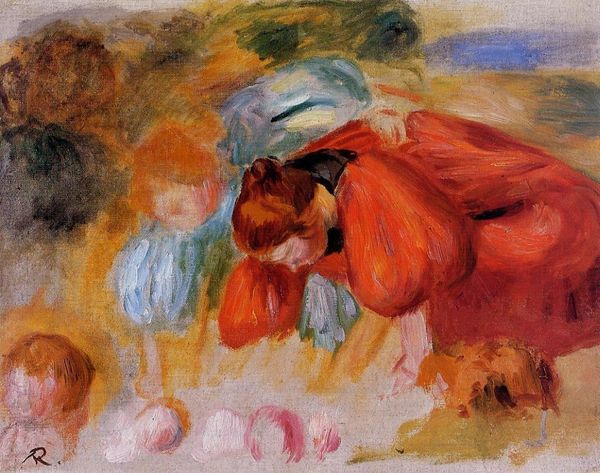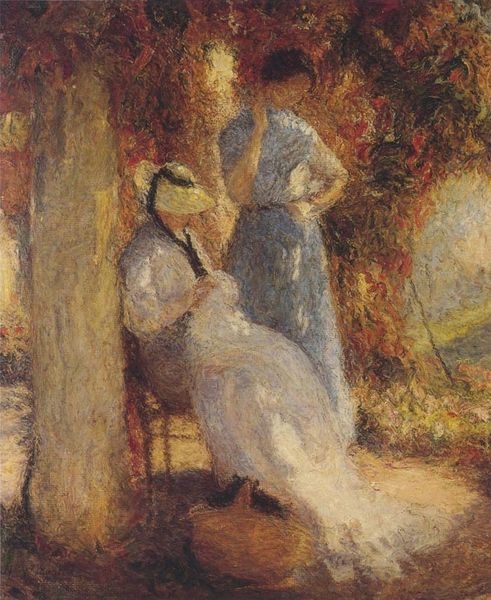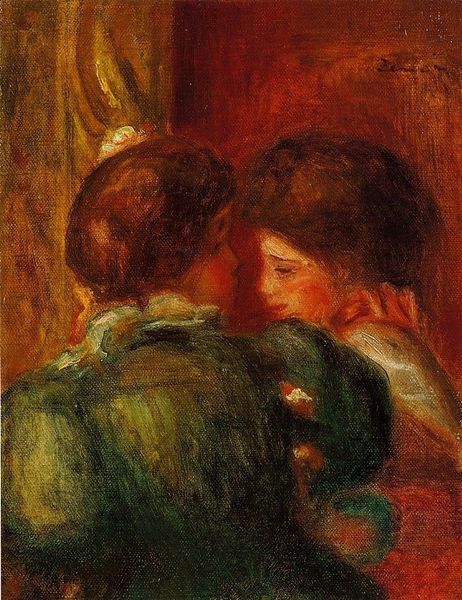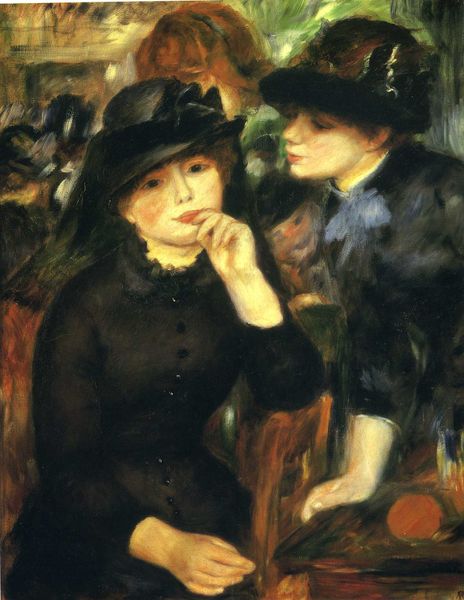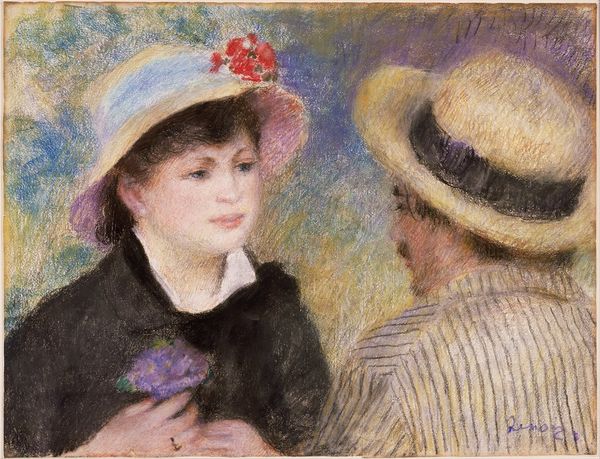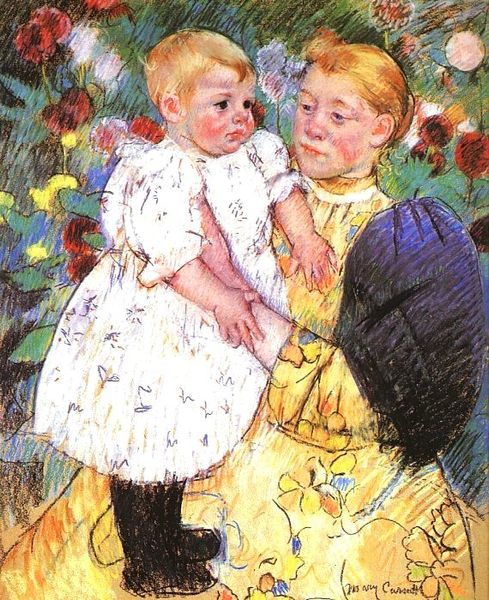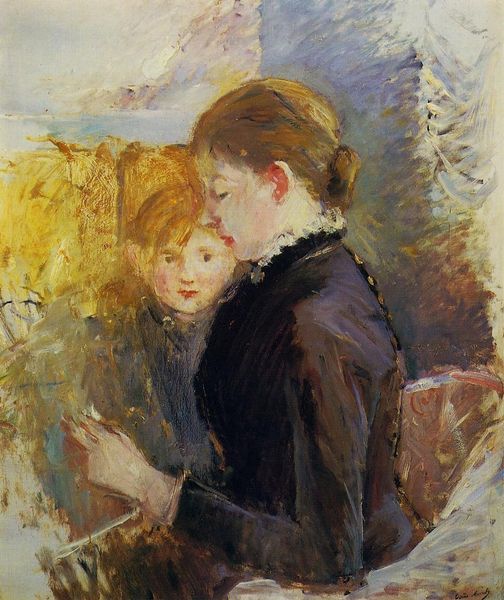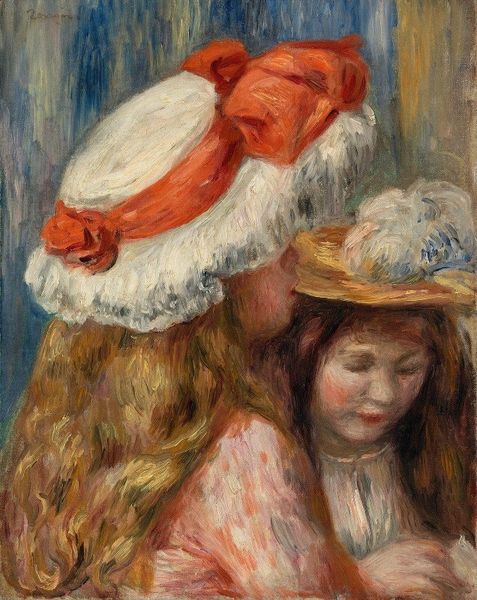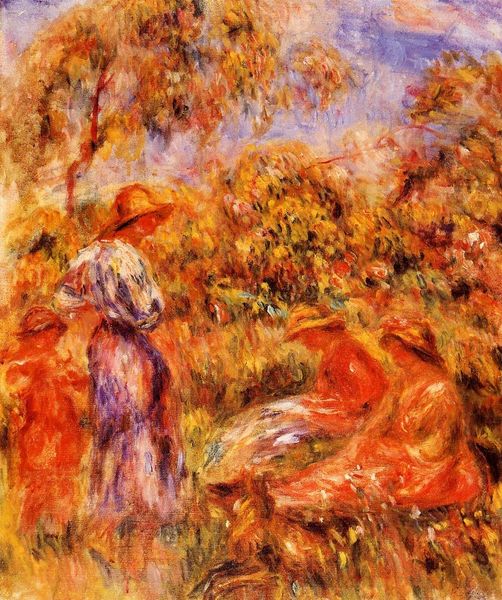
Copyright: Public domain
Editor: So this is Renoir's "Two Women in a Garden," painted in 1895 with oil. The brushstrokes look very soft, and everything kind of blends together. What strikes me the most is how tactile the textures look – especially the women's clothing. What's your perspective on it? Curator: Well, look at the *stuff* of it all – the oil paint, laid down in short, visible strokes. Consider the labor involved, not just Renoir's, but the entire system that made those pigments available. The vibrant colours weren't simply a product of Renoir's genius, but a consequence of industrial processes that dramatically altered the availability and cost of materials in the 19th century. Notice the clothing itself - it reflects middle-class aspirations toward leisure. What might the context tell us about its market value and consumption? Editor: I hadn't really thought about where the paint itself came from. So, those vibrant colors and the accessibility of oil paints, influenced his artistic choices? And do you think that the textures simulate wealth through materiality and fabrics? Curator: Absolutely. Renoir and other Impressionists were part of a burgeoning art market, dependent on new means of production and consumption. His works were bought, displayed and collected as luxury goods and status symbols, reflecting changing class structures and social aspirations. Can we then say this image really portrays leisured and beautiful women in nature? What do we do about its relationship to material conditions and cultural habits of its time? Editor: That's such a fascinating lens. I was focusing so much on the aesthetic, I forgot to think about what made the aesthetic possible in the first place. Curator: Exactly. Materiality brings us closer to production. Editor: Thanks, I'll be sure to see this painting in a different light from now on. Curator: My pleasure; same here. It is quite stunning, when you look into production and how consumption habits reflect wealth.
Comments
No comments
Be the first to comment and join the conversation on the ultimate creative platform.
